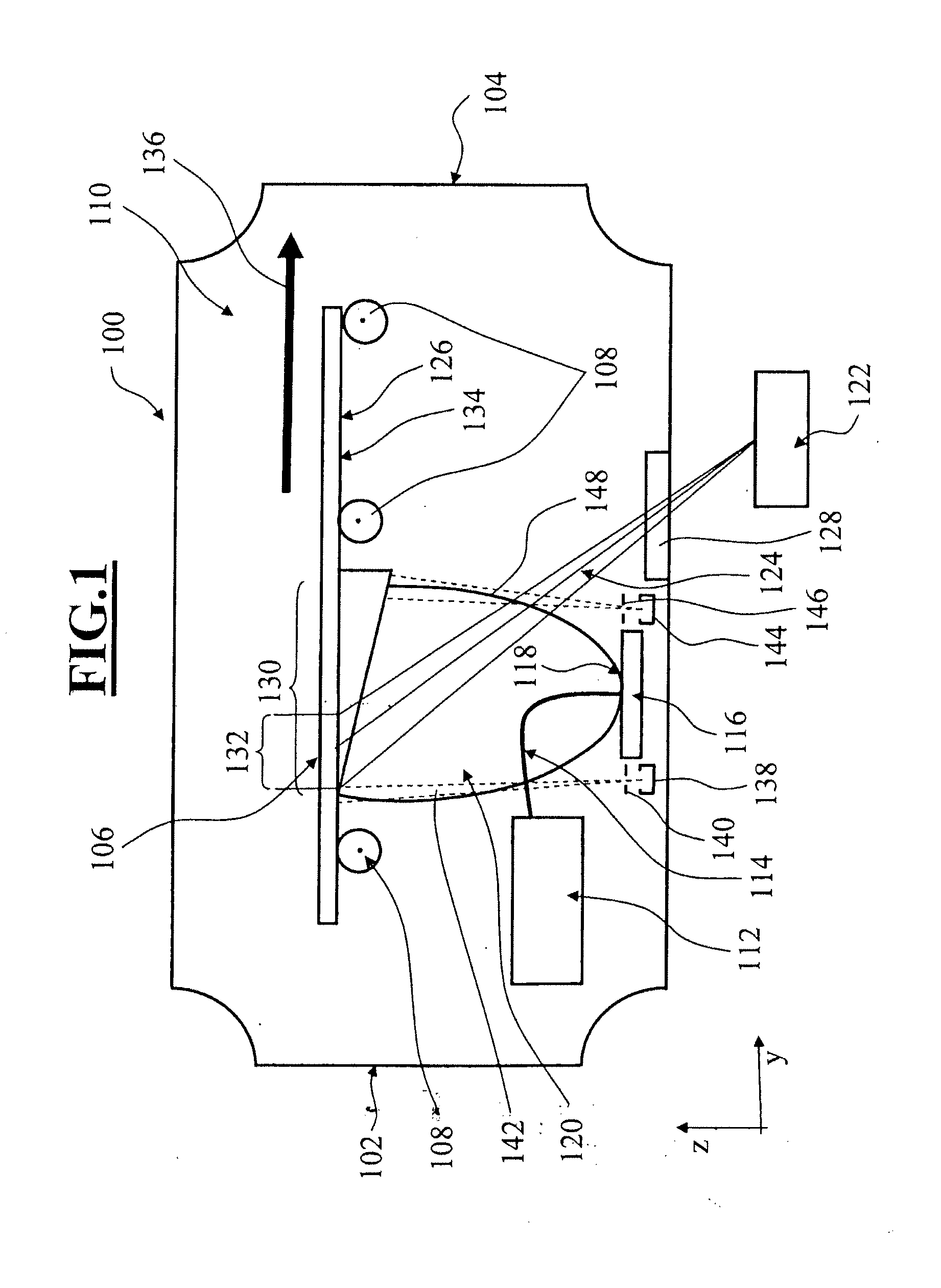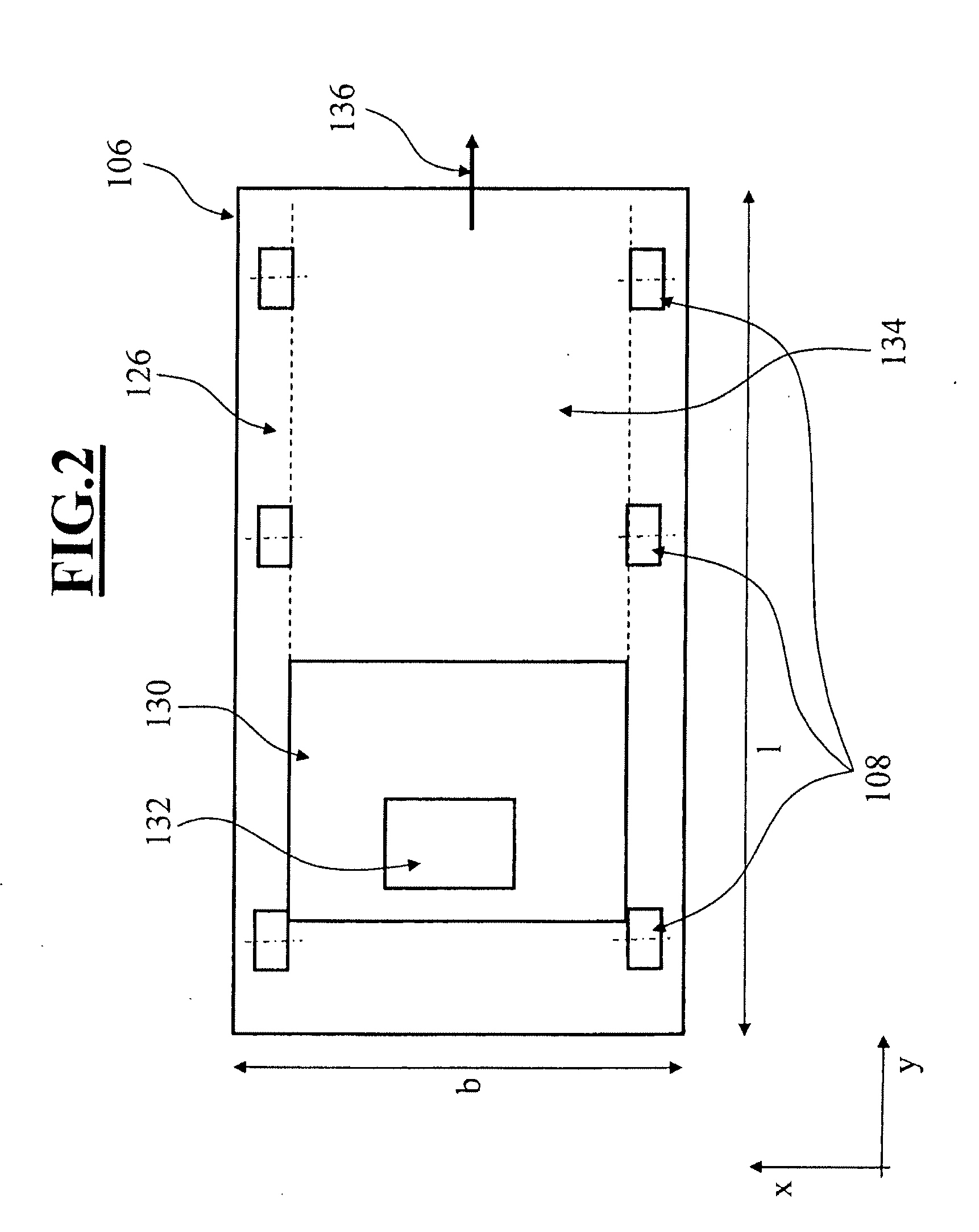Continuous coating installation, methods for producing crystalline solar cells, and solar cell
a technology of crystalline solar cells and continuous coatings, applied in the direction of pv power plants, sustainable manufacturing/processing, final product manufacturing, etc., can solve the problems of high production rate, low deposition rate of crystalline thin films, and inability to produce high-quality semiconductor structures cost-effectively, so as to avoid the melting of the underlying layer
- Summary
- Abstract
- Description
- Claims
- Application Information
AI Technical Summary
Benefits of technology
Problems solved by technology
Method used
Image
Examples
first embodiment
[0078]FIG. 3 shows a coating installation 200 with a first embodiment variant of a laser crystallization system 122. The basic illustration reveals a vacuum chamber 110 with supply and discharge opening 102, 104 and chamber window 128.
[0079]Constituent parts of the installation 200 are, alongside the laser crystallization system 122, a transport device (not illustrated here) and also a PVD coating device (likewise not illustrated) (if appropriate with effusion cell(s)) of the type shown in FIGS. 1 and 2.
[0080]In this embodiment variant according to FIG. 3 , the laser crystallization system 122 includes three lasers 202, 204, 206. The latter emit laser beams 254, 256, 258 having a power of 300 watts, a pulse frequency of 300 hertz and a laser energy of one joule per pulse.
[0081]The laser beams 254, 256, 258 are respectively directed onto two-dimensional single-stage homogenizers 208, 210, 212. The homogenized laser beams 260, 262, 264 emerging from the homogenizers 208, 210, 212 on t...
third embodiment
[0090]FIG. 5 shows a further continuous coating installation 400 with a third embodiment variant of a laser crystallization device 122.
[0091]The continuous coating installation 400 again includes a vacuum chamber 110 with a supply opening 102, via which a substrate 106 can be supplied in feedthrough direction 136, and with a discharge opening 104, via which the substrate 106 can be removed in feedthrough direction 136. A constituent part of the continuous coating installation 400 is once again a PVD coating device (not illustrated), which can be arranged above or below the substrate 106. In this respect, the continuous coating device 400 is identical to that according to FIG. 4.
[0092]A third embodiment variant of a laser crystallization device 122 is depicted as a further constituent part of the continuous coating installation 400 in FIG. 5 of the drawing. As in the previous exemplary embodiment, the laser crystallization device 122 includes three lasers 402, 404, 406 having a power...
PUM
| Property | Measurement | Unit |
|---|---|---|
| grain diameters | aaaaa | aaaaa |
| grain diameters | aaaaa | aaaaa |
| thicknesses | aaaaa | aaaaa |
Abstract
Description
Claims
Application Information
 Login to View More
Login to View More - R&D
- Intellectual Property
- Life Sciences
- Materials
- Tech Scout
- Unparalleled Data Quality
- Higher Quality Content
- 60% Fewer Hallucinations
Browse by: Latest US Patents, China's latest patents, Technical Efficacy Thesaurus, Application Domain, Technology Topic, Popular Technical Reports.
© 2025 PatSnap. All rights reserved.Legal|Privacy policy|Modern Slavery Act Transparency Statement|Sitemap|About US| Contact US: help@patsnap.com



